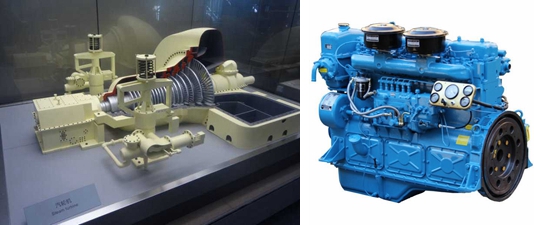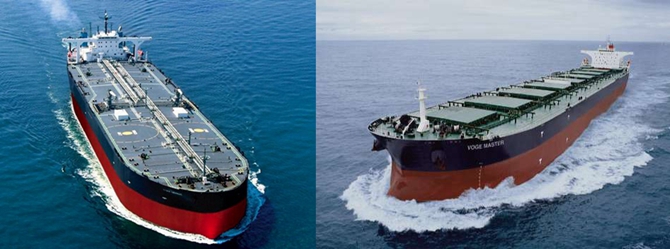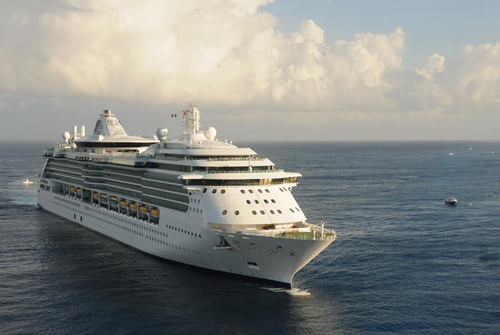Steam engine ship age
After the invention of the steam engine in the 18th century, many people tried to use the steam engine on ships. In 1807, American R. Fulton used steam engines to drive paddle wheels mounted on both sides of the "Clermont" for the first time, and successfully sailed on the Hudson River. Since then, mechanical force began to replace natural force, and the development of ships has entered a new stage.
Early steam engine ship
The first half of the 19th century was a period of transition from sailing ships to steam engine ships. The early steam engine ships were equipped with a full set of sail gear, and the steam engine was only used as auxiliary power. The "Savannah" steam engine sailboat built by American M. Rogers in 1819 took 27 days to cross the Atlantic Ocean. During the entire voyage, only 60 hours were propelled by steam engines, and wind was still used for the rest of the voyage. In the early days, steam engines were installed on the deck to drive huge paddle wheels mounted on both sides. In 1839, the first "Archimedes" ship equipped with propellers was built, with a length of 38 meters and a main engine power of 80 horsepower. Early steam engines were installed on wooden sailboats. After 1850, iron was gradually used as shipbuilding material. After 1880, steel soon replaced iron as a shipbuilding material. In 1876, 8% of the new ships built in Britain were made of steel. By 1890, only 8% were iron ships.

Steam engine ship
"Great Eastern" steam engine ship
The "Great Eastern" iron ship built by the British I.K. Brunel from 1854 to 1858 is considered a miracle in the history of shipbuilding. Brunel was the first to apply the mechanics theory of beams to shipbuilding, and pioneered the longitudinal frame structure and the grid-type double bottom structure in the construction of the hull. The double bottom extends to both sides until above the load waterline, forming a double hull. The upper deck also uses the same structure to increase the strength of the hull. The Great Eastern was 207 meters (680 feet) long and had a displacement of 27,000 tons, which was six times larger than the large ships of the time. The interior of the ship is divided into 22 cabins by vertical and horizontal bulkheads. Two steam engines are installed on the ship, one driving a 56-foot-diameter paddle wheel, and the other driving a 24-foot diameter propeller. The total power of the steam engine is 8,300 horsepower, and the maximum speed is 16 knots. There are 6 masts on board, with a total sail area of 8,747 square meters (85,000 square feet). It can carry 4,000 passengers and 6,000 tons of cargo. It wasn't until half a century later that a ship larger than it appeared. Although the "Great Eastern" failed to operate, it opened the way for modern steel ships in terms of shipbuilding theory and technology.
The perfection of the steam engine ship
The early steam engines used to drive paddle wheels in steam engines were single-cylinder rocker arms, and the steam pressure was also very low. In the 1880s, a three-increase steam engine appeared, and the steam pressure was increased to 10.5 kgf/cm. At this time, the paddle wheel has been replaced by the propeller, and the three-expansion steam engine with the propeller has become a typical power unit. At the end of the 19th century, the steam engine has been developed to a four-cylinder six-cylinder, the steam pressure has been increased to 13.6 kgf/cm, and the power has reached 10,000 horsepower. High-pressure water tube boilers have gradually replaced Scottish fire tube boilers. At the beginning of the 20th century, cargo ships generally used triple-expansion steam engines as main engines, with a power of about 2,000 horsepower, a speed of about 10 nautical miles per hour, and a deadweight increased to 6,000 tons. A large ocean-going passenger ship sailing in the Atlantic Ocean is powered by a reciprocating steam engine with a single engine power of 20,000 horsepower.
The advent of steam turbine ships and diesel ships
In 1896, the British C.Parsons successfully applied the reaction steam turbine he invented on board ships; in the same year, the Swedish C. Dilaval invented the impulse steam turbine. After entering the 20th century, marine steam turbines have been continuously improved. Because of their light weight, high power, uniform rotation and no reciprocating parts, they are commonly used in large high-speed ships. So far, some high-power ships still use steam turbines as propulsion power. In 1892, German R. Diesel invented a compression-ignition internal combustion engine, or diesel engine, which was used on ships in the early 20th century. Diesel engines have high thermal efficiency and low fuel consumption, so they are widely used. At the end of the 1940s, the tonnage of diesel engine ships exceeded that of steam engine ships.

Steam turbine, diesel engine
The emergence of oil tankers and bulk carriers
Early general cargo ships undertook the transportation of all kinds of cargo, including bulk coal, grains, etc. and barreled oil. In 1886, ships with the characteristics of modern oil tankers began to appear, that is, cargo oil was directly loaded in separated oil-tight compartments and loaded and unloaded with pumps and piping systems. After entering the 20th century, the demand for oil increased, and oil tankers gradually formed a dedicated fleet. The largest oil tanker in 1944 had a deadweight of 23,000 tons. Bulk carriers appeared slightly earlier than oil tankers, but in the first half of the 20th century, due to the low efficiency of port loading and unloading, the development was slow, and the maximum load capacity was only about 10,000 tons. After the Second World War, the economies of the industrialized countries recovered, the demand for raw materials increased sharply, and both oil tankers and bulk carriers developed into large-scale vessels.

Oil tanker, bulk carrier
The rise of large ocean-going passenger ships
Before the 1870s, transport ships were mixed with passenger and cargo. In 1870, the British S. Cunard and T. East May founded the Cunard Steamship Company and the White Star Steamship Company, and opened up passenger ships with comfortable travel conditions on the routes between Britain and North America, and the luxury passenger ship "Ocean" sailed. success. Since then, countries have built large luxury passenger ships one after another, sailing on the Atlantic route and the Eastern route. In the 1980s, there were luxury passenger ships carrying more than 1,000 passengers, with a capacity of more than 10,000 tons, and a speed exceeding 20 nautical miles per hour. In the 1930s, the construction of large ocean-going passenger ships reached a climax, such as the famous "Queen Mary", "Queen Elizabeth" and "Normandi" were built during this period. They have a load capacity of more than 80,000 tons. The main engine is a steam turbine with a power of 160,000 horsepower and a speed of more than 30 nautical miles per hour. After World War II, this momentum resumed, and it stopped in the 1960s due to the rise of long-range jet airliners. The construction of large ocean-going passenger ships has played an important role in promoting the development of shipbuilding science and technology, and at the same time, it has gradually established and improved certain laws and regulations to ensure navigation safety. For example, the "Titanic" shipwreck in 1912 led to the signing of the International Convention for the Safety of Life at Sea.

Ocean passenger ship






